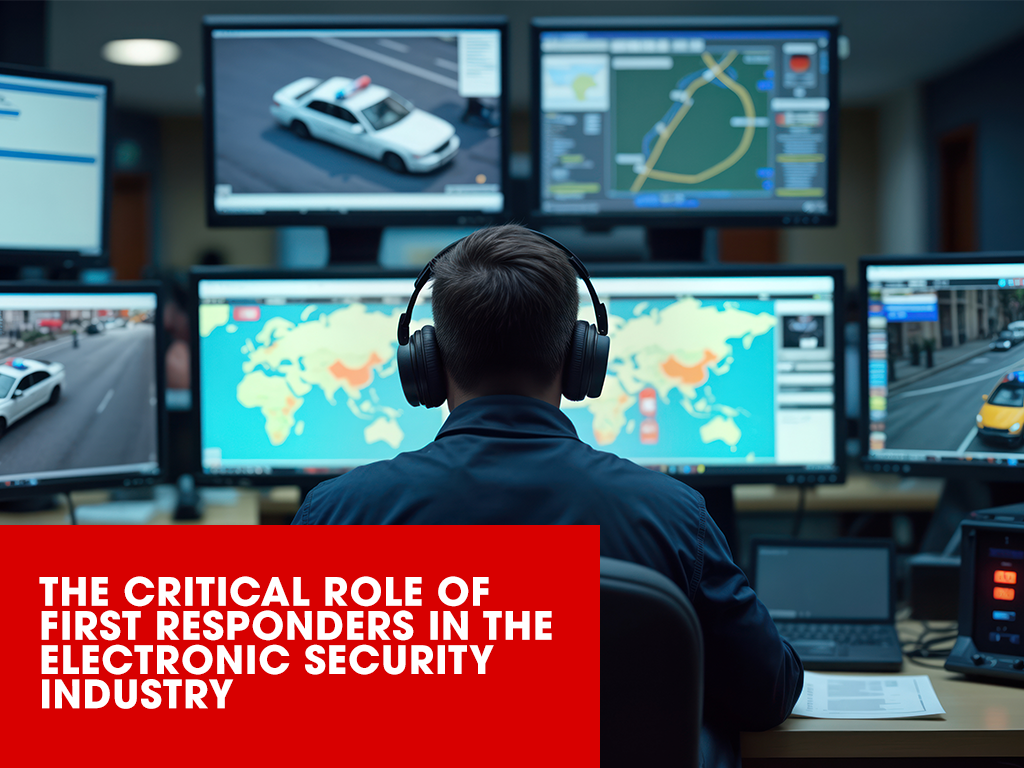The Critical Role of First Responders in the Electronic Security Industry

By Kevin Stone
In today’s world of digital innovation and high-tech surveillance, electronic security systems such as alarm panels and CCTV systems form the backbone of residential, commercial, and institutional safety. But while technology plays a crucial role in detecting and alerting to threats, it is the human element, specifically the swift action of first responders, that completes the circle of protection. Whether it’s police officers, firefighters, or emergency medical personnel, first responders remain a vital part of the electronic security equation.
Without first responders’ rapid response, even the most advanced alarm system is just a notification. The responders’ presence turns a sensor alert into a life saved, a theft prevented, or a fire contained. However, the efficiency and reliability of this system depends heavily on accurate signaling, timely communication, and minimizing false alarms that can dilute trust and delay real emergencies.
First responders are typically dispatched through central monitoring centers that receive alerts from electronic security systems. These centers verify alarms and, when warranted, notify the appropriate emergency services. The speed and accuracy of this chain of communication can make the difference between a minor incident and a major loss.
For example, a break-in detected by a perimeter sensor may only be stopped if officers are able to respond quickly. In a fire scenario, smoke detectors connected to a monitoring system can trigger a fire department dispatch before the flames get out of control. In both cases, time is critical, and the role of first responders is irreplaceable.
One of the biggest challenges in the Electronic Security Industry is the high rate of false alarms. Many alarm activations are false, triggered by user error, pets, environmental changes, or faulty equipment. These false alarms have a cascading effect; they waste the time and resources of emergency personnel, strain municipal budgets, and can ultimately lead to slower response times for genuine emergencies.
Many cities and counties fine property owners for repeated false alarms, and some jurisdictions have even implemented policies to stop responding to unverified alarms altogether. This trend is a red flag for the electronic security industry; it signals a growing frustration with systems that fail to differentiate between real danger and routine disturbance.
The Real Danger: Complacency
The danger of not taking action to reduce false alarms or maintain systems properly goes beyond financial penalties. When false alarms become routine, they risk creating a “cry wolf” effect. Responders may become less urgent in their approach, or systems may be downgraded or ignored altogether by local law enforcement agencies. In a real emergency, this delay or non-response can have devastating consequences.
Additionally, a poorly maintained security system, whether it’s a low battery or malfunctioning sensors, can fail entirely in a crisis. This not only compromises the safety of people and property but undermines public confidence in electronic security solutions.
Strengthening the Relationship
To preserve the crucial relationship between the electronic security industry and first responders, companies and property owners must take proactive steps:
- User Education: Many false alarms are caused by user error. Providing clear training and support for end-users can dramatically reduce these incidents.
- Routine Maintenance: Regular system checks, updates, and equipment testing ensure that alarms function properly.
- Partnership with Local Agencies: Security providers should engage with local police and fire departments to stay aligned with policies, response protocols, and community expectations.
- Invest in Verification Technology: Modern systems with video verification can confirm whether an alarm is real before contacting emergency services.
The Path Forward
First responders are the frontline heroes who bring meaning and effectiveness to the electronic security industry. Their readiness and bravery convert technology into real-world safety. Efforts are underway to help the industry move forward. The Automated Secure Alarm Protocol (ASAP) is a service that increases the efficiency and reliability of signal activity from monitoring companies to Emergency Communication Centers (ECCs). In addition, TMA recently released AVS-01, an alarm verification scoring standard that provides consistent criteria to help prioritize incidents.
By taking a serious approach to reducing false alarms, improving system performance, and maintaining open communication with emergency services, the Electronic Security Industry can ensure a path to success. The future of safety isn’t just in smarter technology; it’s in stronger collaboration with first responders who answer the call when it matters most.




